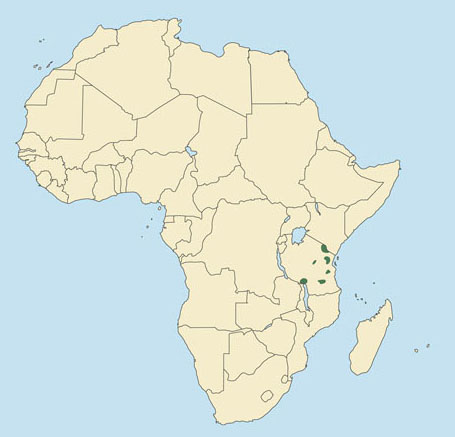 |
Cephalophus spadix
Duiquer de Abbott (Sp), Abbottducker (G), Céphalophe spadix (F). Named for W. L. Abbott, who collected the first specimen high on Mt. Kilimanjaro in about 1890.
DESCRIPTION Shoulder height 24-26 inches (61-66 cm). Weight 100-110 pounds (45-50 kg).
Although the Abbott duiker is large and heavily built, it is the smallest of the three "giant" duikers, the others being the Jentink and yellow-backed. The general color is a uniform dark chestnut brown, lighter on the flanks. The head tuft is chestnut tipped with black. Chin and throat are grayish, and there is a small gray patch on the rump above the tail. The tail has a white tip. The horns (both sexes) are lightly ridged at the base, round in section, slender, and grow backward in the plane of the face. Females appear to be similar to males, but body and horn size is not known.
BEHAVIOR Has always been rare and not much is known about it, but is probably sedentary, and probably breeds throughout the year. A selective feeder, its diet is known to include fruits, flowers and young shoots.
HABITAT Mainly in evergreen rain forests on the wetter sides of isolated mountains.
DISTRIBUTION Only in Tanzania, where they occur locally in mountain forests in the east and south, including Mt. Kilimanjaro, the Usambara, Uluguru and Uzungwa mountains, and Mt. Rungwe in the southern highlands, at altitudes from about 4,500 feet (1,400 m) upward to 16,000 feet (4,900 m).
STATUS Listed as vulnerable by the IUCN. Populations are small and, though protected by law, they are seriously threatened by habitat destruction, human encroachment and poaching with nets, traps and dogs.
TAXONOMIC NOTES No subspecies are recognized.
|





